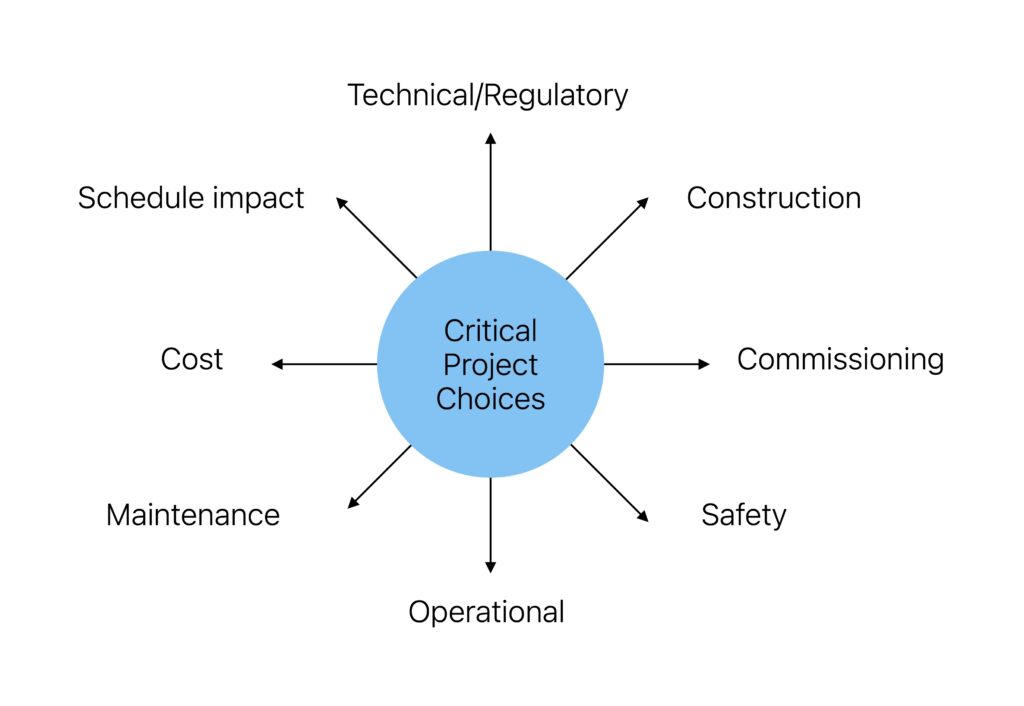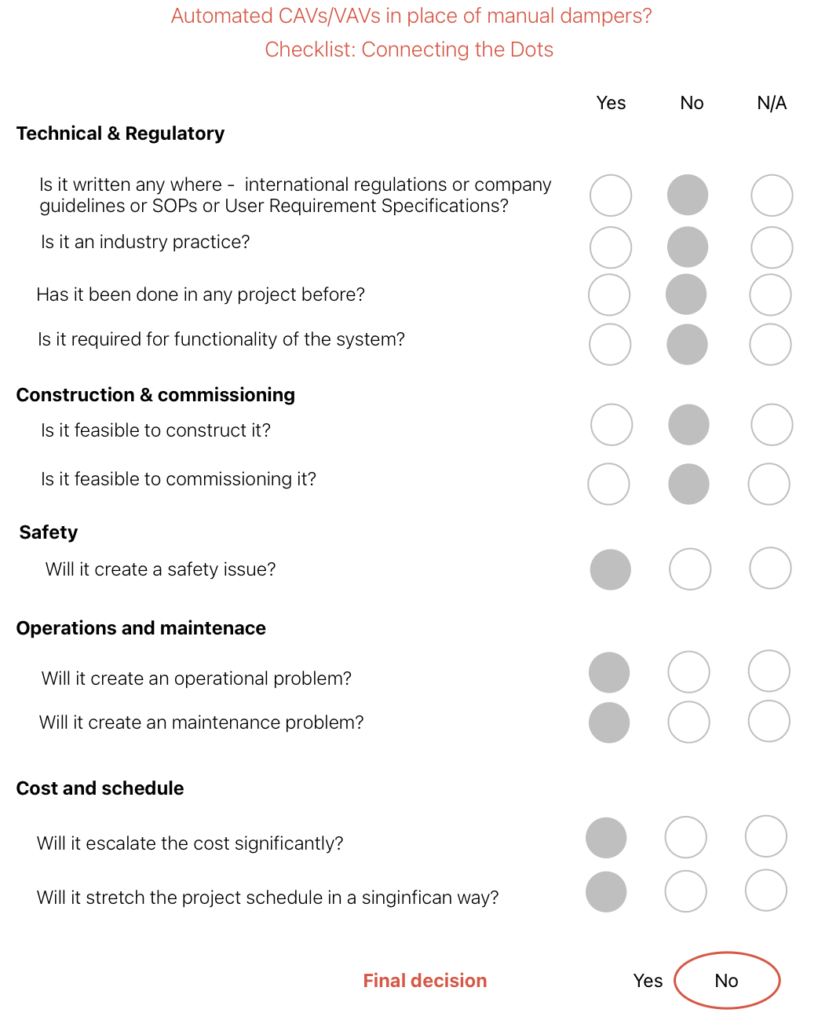How to Avoid Project Choices That Bite Back Later
In projects, as in life, sometimes we make critical choices that initially look smart but later turn out to be dumb. During the lifecycle of a biopharma project, especially during the initial design phase, many such choices have to be made that do not reveal their true colors right away. But later on, these choices can lead to either peace or mess. Here is an example of such a choice in the context of HVAC:
In one of our projects, for a black/NC area (not a cleanroom or controlled area) that housed packaging machines, the initial design included manual dampers in the supply and return air ducts. So to maintain pressure in this area (15 Pa), hard balancing (manually adjusting the supply and return air with dampers) would be required.
But while reviewing the design, the end-users were not happy. They not just suggested but insisted that we should have automated CAVs (in supply air ducts) and VAVs (in return air ducts) instead of manual dampers. Their logic was simple: Manual dampers were an old-fashion idea in this era of automation, and the site deserved a high-tech system where CAVs and VAVs could be monitored and controlled while sitting in a control room.
Anyone with a little bit of experience in HVAC understands that technically both manual dampers or CAVs/VAVs can work, and there are plenty of successful installations of both types. So the choice was: Why not go for the automated CAVs/VAVs and keep the end users happy?
But that’s where lies the biggest risk while making critical design choices in a project: Not connecting the dots—and regretting later when our choices bite back.
Connecting dots
Connecting the dots means removing the blinkers and looking at an issue from different angles—and not just one angle, like technical or cost. How did the proposal for CAVs/VAVs look when examined from different angles?
The area where end users demanded CAVs/VAVs had a 4 m high false ceiling, which was a non-walkable type. Moreover, the floor space was to be occupied with packaging machines even before HVAC commissioning could begin.
When you understand the above situation, you would realize:
- Since you can’t walk on the false ceiling, installing an automated device above a 4m high false ceiling was a big construction challenge.
- Even if we could somehow install it, it would be a huge challenge to commission the CAVs/VAVs—again, due to extremely difficult accessibility.
- Even if we could construct and commission, it would be a maintenance nightmare. How would you maintain the CAVs/VAVs when you can’t walk on the false ceiling and also can’t access it from the floor because it was occupied with machines?
The above list doesn’t include the significant safety, cost, and schedule impact.
Once we connected the dots, it was clear that it was not just a dumb idea but a deadly idea to go for CAVs/VAVs in this particular case. It could lead to a self-created disaster not only during project execution but for all years to come, affecting the end-users themselves.
Eventually, after multiple debates and meetings, we finally buried the CAVs/VAVs idea – and saved the project from a bad choice.
While facing many such cases along the way, I realized no one wants to make decisions that bite back later. But such decisions still happen in projects. Why?
The root of the dumb decisions lies not in lack of technical knowledge or experience or good intentions. It’s the inability to connect the dots and see the big picture—and think over the long term. As the diagram below shows, every critical decision in a project is like throwing a pebble in a pond: the ripples go in all directions—and keep traveling over time.

How can we connect the dots and not be blindsided by narrow, short-term thinking? Believe it or not, a simple tool like a checklist can save us from dumb decisions. I have used it successfully to evaluate difficult choices, and it works beautifully.
Shining light from different angles
Our mind needs a framework to think through a complex issue that involves multiple considerations. That’s where a checklist like the one shown below helps. It enables us to systematically think through an issue from one angle at a time and provides a logical basis to see the implications of any critical choice over the lifetime of a project.

The checklist above can be improved and modified, but the main point is to not lose sight of the fact that complex and critical decisions are multi-dimensional. And unless we apply a framework to think through from different angles, we will likely miss out on something that can haunt us later.
